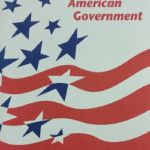Since 1988, the U.S. Government has set aside the period from September 15 to October 15 as National Hispanic Heritage Month to honor the many contributions Hispanic Americans have made and continue to make to the United States of America. Our Teacher’s Guide brings together resources created during NEH Summer Seminars and Institutes, lesson plans for K-12 classrooms, and think pieces on events and experiences across Hispanic history and heritage.
Hispanic Heritage Month Activities & Resources

Each year, from September 15 to October 15, the United States observes Hispanic Heritage Month. During the month-long celebration, which begins on the anniversary of the independence of many Latin American countries, we commemorate the histories, cultures and contributions of Hispanic American citizens. Share My Lesson has lesson plans, activities, and classroom resources to help educators celebrate Hispanic Heritage Month in their schools.
Indigenous Peoples and Native American Lesson Plans & Resources

November is National Native American Heritage Month, and now more and more schools are recognizing Indigenous Peoples Day, in lieu of Columbus Day, on the second Monday in October. Share My Lesson has curated this collection of free lessons, activities, and videos to assist educators in teaching about the ways of life of indigenous peoples from around the world in order to foster understanding of our shared sense of humanity.
Pathways to the Bench: Hispanic Heritage Month
The federal courts honor Hispanic Heritage Month, which is observed from September 15 to October 15, by recognizing individuals who have made contributions to our country and inspire others to succeed. U.S. Magistrate Judge Maria G. Valdez, of the Illinois Northern District Court in Chicago, advises others who face challenges to keep going even when they don’t think they can succeed.
Celebrating Asian American Pacific Islander (AAPI) Heritage

Join the Share My Lesson community in celebrating the generations of Asian and Pacific Islander Americans who have enriched global society, playing a critical role in its development and success. With our wealth of prek-12 digital resources, you and your students can explore the remarkable contributions that AAPI Americans have given to history, culture, the sciences, industry, government and more. In addition to recognizing the vast achievements of the AAPI community, work with your students and community to understand diverse perspectives and the difficult struggles that AAPI Americans have grappled with throughout the history of the United States.
Our Heritage of Liberty: The Bill of Rights
This lesson is based on a two-part Annenberg Classroom video – The Story of the Bill of Rights and the Ten Amendments – about one of the toughest political fights in American history and the outcome that became a symbol of liberty and freedom in America: The Bill of Rights.
Our American Government

Our American Government is a popular introductory guide for American citizens and those of other countries who seek a greater understanding of our heritage of democracy. The question-and-answer format covers a broad range of topics dealing with the legislative, executive, and judicial branches of our Government as well as the electoral process and the role of political parties. (House Document 108-94)
NHD Breaking Barriers: Americans and Native Americans
From the colonial era, relations between European settlers and Native American nations have been complicated. In 1803 Congress authorized and funded an expedition led by Meriwether Lewis and William Clark for exploration of the region and for better knowledge about American Indians of the Northwest in order to develop trade. About 30 years later, the United States forced the removal of Native Americans from their lands to make way for white American settlement. Congress and the president made treaties with Native American nations, but those treaties were not always respected as the United States continued to expand into the west. After Native Americans enlisted and served in both World War I and World War II, Congress passed legislation to begin to address longstanding Native Americans claims against the United States Government.
Not “Indians,” Many Tribes: Native American Diversity
In this unit, students will heighten their awareness of Native American diversity as they learn about three vastly different Native groups.
Native American Cultures Across the U.S.
Teaching children about the First Americans in an accurate historical context while emphasizing their continuing presence and influence within the United States is important for developing a national and individual respect for the diverse American Indian peoples, and is necessary to understanding the history of this country.